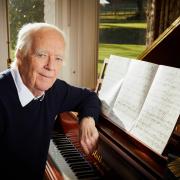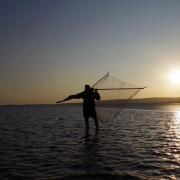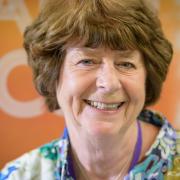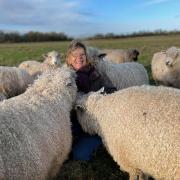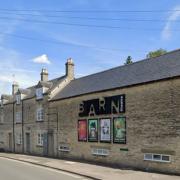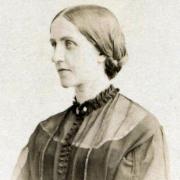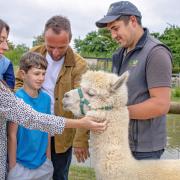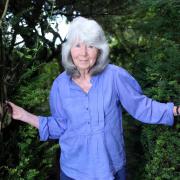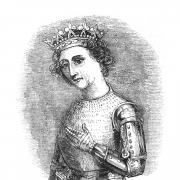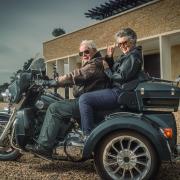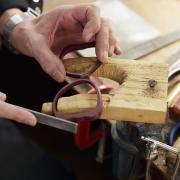The largest military air show in the world is celebrating its 40th anniversary. Katie Jarvis talks to founder member and chief executive of the Royal International Air Tattoo, Tim Prince
The thrill factor
The largest military air show in the world is celebrating its 40th anniversary. Katie Jarvis talks to founder member and chief executive of the Royal International Air Tattoo, Tim Prince, about his early interest in aviation and some of the events more memorable occasions
If you want to see the seemingly-impossible, the Royal International Air Tattoo isn’t a bad place to start. Rapt spectators - necks craned, hands over ears – have witnessed some amazing sights over this air show’s 40-year history: the remarkable US reconnaissance aircraft, the SR-71 Blackbird, which flew at three times the speed of sound (still a world record-holder more than 40 years after it first flew); the MiG jet fighter performing amazing antics with its variable thrust; the American B2 Stealth Bomber which, in military terms at least, is the nearest you’ll get to an invisibility cloak.
But quite the most extraordinary fact about the Air Tattoo is that it exists at all. “You’d never start the Air Tattoo up nowadays,” grins Tim Prince, a founder member and chief executive. “You’d be laughed out of court if you suggested that a bunch of civilians could take over a big American base.”
But that’s exactly what happens each July when the US Air Force hand over the keys – lock, stock and smoking barrel – of their standby airbase at RAF Fairford, and allow Tim, his team and some 3,000 dedicated aviation and military volunteers to turn it into the largest military air show in the world, attended by crowds of up to 160,000. It’s a show that pours its profits into the Royal Air Force Charitable Trust - �2 million over the past six years, half a million of which went to the air cadets, the rest supporting the RAF family.
The Air Tattoo began in North Weald in 1971, moved to RAF Greenham Common two years later, before settling at RAF Fairford in 1985. We asked Tim to take us back over its 40 years of success.
So, Tim – always been interested in planes?
My dad was a rose-grower at Wallingford - I was going to be the fifth generation rose-grower – but while I was out on the nursery helping him, I’d be watching the planes going round the circuit from [RAF] Benson nearby. He used to provide the roses for the officers’ mess there and I actually got thrown out of the Queen’s Flight Heron because I found my way into it at the age of seven!
First flight?
An early boyfriend of my sister, who owned a little old army Auster, flew us to the Isle of Wight, where he bought me a pint of limeade. Unfortunately, due to bumpiness on the way back, the limeade reappeared. That was the end of a beautiful relationship for my sister.
You trained as a civilian air traffic controller...
...where I met my colleague, Paul Bowen, who invited me and some others to go to North Weald, near Epping, to help his father run an air show. We mixed with the lovely old WW2 pilots who ran it pretty much as a reunion: the public admission fees subsidised their beer! We saw an opportunity to upgrade it and, the next year, they let us take it over. We came up with the name ‘Air Tattoo’ because a tattoo was the beating of a drum to call troops back in from drinking beer in the evening.
Paul, who sadly died in 2004, was a tremendous character.
He was one of those guys with great vision and it was his idea to make the tattoo a meeting place for the NATO aviators, which gave foreign air forces a genuine reason to come to this event, rather than just because it was fun. Even in those days, money was getting a little tighter!
In the early days, the show was on a prayer as much as a wing.
We were operating on a disused airfield so we had to put everything together from scratch. For the first show, we had a total of three telephones – we have about 200 nowadays – and two walkie-talkies. When the battery went down on one, the other was useless! And when the last airplane came to leave, we’d run out of battery-power on the only aircraft start-unit so we had to go and find another from a nearby RAF station.
Douglas Bader, the legendary WW2 flying ace, was very much involved. What was he like?
He was a motivator, who didn’t take prisoners: a very, very determined man who never wanted help, even though he had two artificial legs. [He lost them in a flying accident but still took to the skies as a war pilot]. Sir Douglas taught us how to keep on going, no matter what was in the way. Whereas another of his squadron – Sir Denis Crowley-Milling – taught us how to do it nicely so people would come back the next year. The Crow – as he was affectionately known - secured our ‘royal’ title for our 25th anniversary, even though he was very ill: he sat in his hospital bed, writing letters to the Duke of Edinburgh and others. We were able to share a glass of champagne with him just before he died.
Tell us about the mid-air collision in 1993...
That was between two Russian MiG-29s – a scary moment. I watched the fireball, then tried to get into the control tower and couldn’t remember the code! What was pleasing was the way our organisation swung into action and, within minutes, we got the flying display continuing to keep everybody entertained and safe. The pilots, who both ejected, were mortified, but our approach was to put the kettle on and bring them down to reality. We’ve got a crash helmet and control column from one of the airplanes in the office.
Favourite moments?
I can remember one particular departure day, when I was chasing a paper bag that was blowing towards the runway, and a Blackbird took off right by me. The noise was unbelievable; the turbulence was something else again. But the thrill factor? You couldn’t have paid for that.
The Royal International Air Tattoo 2011
This summer’s air tattoo will mark its 40th anniversary with a series of exciting set pieces, both in the air and on the ground. Aircraft from countries including New Zealand, Jordan, Austria, Saudi Arabia, Belgium, Italy, Turkey, Oman and the US will join the Royal Air Force to celebrate one of the UK’s most exciting outdoor events.
Also on display will be a wide range of colourfully-painted ‘Tiger’ aircraft from the NATO Tiger Association. These striking aircraft come from squadrons with a tiger in their emblem, and the tattoo will be turning the spotlight on its historic links with their association on its 50th anniversary.
Aerial highlights
Nine thrilling aerobatic display teams from around the world including the Red Arrows, the Italian Frecce Tricolori and the exciting UK debut by the Saudi Hawks
World’s most powerful fast jets including the Typhoon, Gripen, Rafale, F-16 and Tornado
Classic warbirds such as the Lancaster, Spitfire, Hurricane and Mustang
Dazzling helicopter displays by an RAF Chinook plus Dutch and Army Air Corps Apaches
On the ground
Wide range of interactive activities for youngsters in Tri@RIAT areaDisplay by the Broke FMX Freestyle Motocross TeamTake a leap off the daunting ParaTowerCheer on the competitors in the field gun competition PLUS Europe’s No1 mountain bike freestyle team – the Animal Bike Tour.
Other attractions on the ground include a stunt car demo, a classic car display, a 1940s’ village, a life-size model of the Bloodhound supersonic car, plus evening entertainment.
Sunday soul
Soul diva Alexandra Burke makes a one-off live appearance on Sunday, July 17, performing many of the hits that have taken her from The X Factor to the top of the charts.
Tickets to RIAT 2011
Ticket prices start from �39; all accompanied under-16s can enter free of charge. For details, call the Ticketline on 0800 107 1940 or visit airtattoo.com. Parking is free for ticketholders. Please note: tickets must be purchased in advance as they will not be available at the gate.



